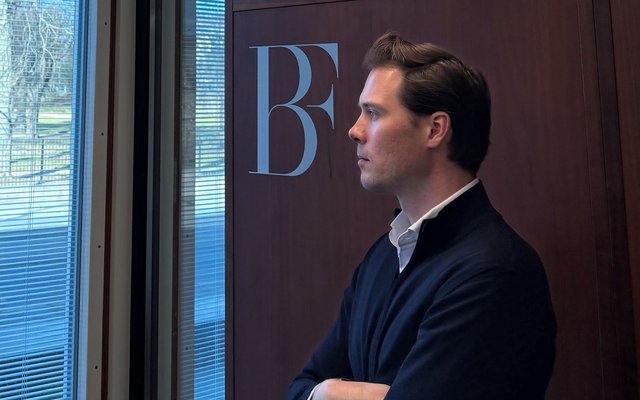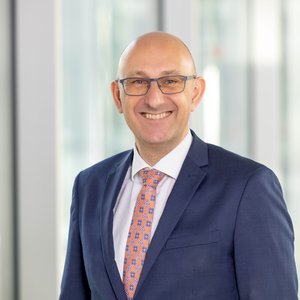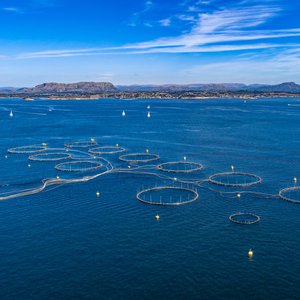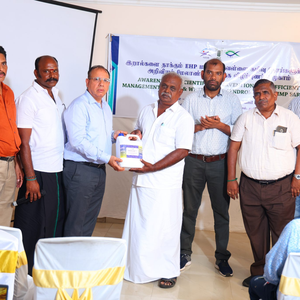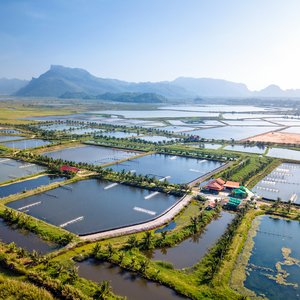Norway has long been a global leader in salmon production. The country’s dominance in salmon exports is a testament to the success of its aquaculture industry. As the sector faces new challenges, such as the loss of social license, the development of innovative technology solutions is crucial to sustaining growth and maintaining Norway’s leadership.
A key driver of innovation in aquaculture is sector-specific investors like Bluefront, which focuses on supporting salmon technology suppliers. Bluefront’s portfolio includes companies of varying sizes and business models, offering both hardware and software solutions. These technologies address different aspects of the seafood value chain, including operational efficiency, fish welfare, environmental sustainability, and data-driven decision-making.
“Despite their differences, all the companies we invest in share one common goal: help fish farmers produce food in a more sustainable and efficient way. By supporting businesses that drive technological advancements in aquaculture, we contribute to the industry’s long-term success and sustainability,” said Johan Kostveit, investment manager at Bluefront Equity, in an interview with our sister media, Aquafeed.com.
Opportunities
With a background in the oil and gas industries, Kostveit transitioned into aquaculture due to its compelling investment potential. While Norway produces only around 2% of the world’s oil and gas, its oil service industry accounts for around 10% of the global market, demonstrating the country’s strong technology export capabilities. Recognizing synergies between offshore oil and gas and aquaculture, Kostveit sees significant opportunities for expanding Norway’s export of aquaculture technology.
“This sector is still in the early stages of development, offering significant potential for growth and innovation. At the same time, aquaculture requires specialized investors who understand its unique dynamics and challenges. Over the past 10-15 years, I have seen sector-specific investment strategies successfully applied in other industries, and I believe aquaculture is at a similar inflection point, making it an exciting and timely opportunity,” said Kostveit.
Beyond financial incentives, Kostveit is drawn to aquaculture’s global importance. “Aquaculture plays a crucial role in feeding a growing population with sustainable, high-quality protein, making it both a meaningful and future-proof investment. Norway, in particular, has a strong position in this field, with world-leading expertise and technology.”
The dynamic nature of aquaculture also makes it appealing. “The combination of food production, animal health, marine environments, and passionate individuals solving complex challenges is especially attractive. It’s an industry where science, sustainability, and business intersect, creating exciting opportunities.”
Challenges
One of the biggest challenges facing Norwegian salmon aquaculture today is regulatory uncertainty. The introduction of the salmon tax in 2023 has led to investment hesitations, with farmers delaying critical decisions. Additionally, the lack of clear regulations for new closed and semi-closed technology systems creates uncertainty for technology developers, farmers, and investors.
“While these challenges haven’t directly impacted our investments, they have had an indirect impact by causing hesitation among customers, leading to delays in investment decisions and spending. Regulatory shifts can influence long-term planning, making it crucial for suppliers to remain agile and adaptable,” Kostveit said.
Another key challenge – though also an opportunity – is the rapidly evolving needs of salmon farmers. “Success in this industry requires deep engagement with the market and end users to ensure that products genuinely address their evolving challenges. Factors like fluctuating sea temperatures, sea lice outbreaks, and disease pressures create constantly shifting needs. This dynamic environment demands technological solutions that are both adaptable and forward-thinking,” Kostveit explained.
Despite these challenges, Bluefront views them as opportunities to invest in companies that can navigate regulatory complexities and develop innovative solutions tailored to the industry’s evolving landscape.
Risks
Aquaculture, particularly open net-pen farming, carries unique risks due to its exposure to environmental factors. “The marine environment, changing weather conditions, genetics, biology, diseases, and predators all introduce significant uncertainties. Unlike controlled production environments in livestock species, salmon farming occurs in an open and dynamic ecosystem where conditions can shift rapidly,” Kostveit said.
However, these risks are more significant for fish farmers than for their suppliers. “While farmers bear the direct consequences of biological and environmental challenges, suppliers can mitigate their exposure by developing solutions that improve control and reduce risk for their customers. That is why we focus on investing in technology providers that enhance predictability, optimize operations, and contribute to more sustainable aquaculture practices. By supporting companies that increase control in fish farming, we help strengthen the industry’s ability to manage its inherent risks and ensure long-term growth,” Kostveit explained.
Success stories
Bluefront’s investment strategy has already yielded success. For example, BioMarine, an aquaculture supplier, developed sea lice and jellyfish skirts. Being one of the main challenges of the industry today, the high demand led the company to establish a production facility in Lithuania and has already sold more than 100 skirts. “BioMarine has been agile and fast in identifying problems and bringing solutions to the market quickly. They have expanded effectively, both organizationally and financially,” Kostveit noted.
Similarly, Akvasafe provides certification and inspection services to minimize fish escapes. “Salmon farmers require these services, but it’s a niche market, so companies need to be highly engaged with their customers to address specific challenges. Akvasafe has experienced strong revenue growth and significant organizational expansion,” Kostveit said.
“As investors, we are very pleased with both companies. We have worked closely with them and believe we have played an important role in their success,” he added.
Attracting more investors to aquaculture
The introduction of the salmon tax led some investors to exit the industry. However, Bluefront remains committed and suggests that to attract more investors, the aquaculture industry must improve its communication with the market and stakeholders.
“Nowadays, the aquaculture industry in Norway has a bad reputation. Norwegians have a much better opinion about the oil and gas industry and that’s because they have been much better in telling the story on how they contribute to the country. The consumer’s opinion is important for market prices, for investors, etc.,” Kostveit said. “The aquaculture industry must clearly articulate both the environmental impact of its production processes, and the essential role seafood plays in feeding a growing population with sustainable protein. Transparency and proactive engagement are key to building trust and demonstrating the industry’s long-term viability.”
Additionally, the industry needs to showcase how it is actively addressing its challenges. “Investors are looking for industries that acknowledge risks but also have clear strategies to mitigate them. By effectively communicating ongoing efforts in innovation, sustainability, and regulatory collaboration, aquaculture can position itself as a forward-thinking and investable sector,” Kostveit said.
Furthermore, stronger dialogue with authorities and investors is essential. “The industry must make clear what it needs in terms of frameworks, technological support, and capital to drive sustainable growth. By aligning expectations and demonstrating a commitment to responsible development, aquaculture can attract the long-term investments necessary to scale and evolve,” Kostveit said.
For new investors considering entering the aquaculture space, Kostveit's advice is to thoroughly research and engage with industry stakeholders. “Unlike many other industries, aquaculture has relatively low transparency, making it crucial to understand the value chain, key macro and micro trends, and the evolving regulatory landscape. Speaking with different players – farmers, suppliers, regulators, and industry experts – can provide valuable insights into both opportunities and challenges,” Kostveit said.
“The best way to get started? Reach out to Bluefront. We have spent years navigating the complexities of the industry and are always happy to share insights on how to approach investments in aquaculture. After all, the best way to understand the waters is to talk to those who know them best,” Kostveit said.
The future
Over the next decade, Kostveit expects a significant increase in investments, particularly in technology and production methods, where capital expenditures are highest. “Aquaculture is the fastest-growing food supply sector in the world, and this growth will demand massive investments in the coming decade. Scaling production sustainability, improving technology, and meeting global seafood demand will require capital in areas like production systems, digitalization, and sustainability. Investors who recognize the industry’s rapid expansion will find opportunities in aquaculture.”
Major opportunities in aquaculture will focus on fish welfare and ocean health. “Innovations such as submersible net pens, semi-closed and closed net pens, and land-based farming facilities have the potential to reduce environmental impact, improve biosecurity, and enhance fish welfare. However, clear regulatory frameworks are necessary to support these advancements,” Kostveit noted.
“Land-based aquaculture has been risky, and it still is, but the risk is decreasing with players like Salmon Evolution showing positive results. Large private equity firms can enter this space without taking excessive risks, while lower middle market PE firms will see aquaculture as an attractive sector but will face competition from specialized investors like us,” Kostveit noted.
In this technology shift, software and AI will play a transformative role. According to a Bluefront analysis, the aquaculture industry currently invests only about 1% of its revenue in software and IT solutions, compared to the 6-8% seen in other mature industries. “AI-driven tools and advanced software will be able to optimize operations, improve predictability, and enhance sustainability, making fish farming more efficient and data-driven. It would require data and communication along the value chain,” Kostveit said.
Beyond salmon, Bluefront sees significant potential in applying these production technologies to other species in different regions of the world, such as closed systems in seabass and seabream in the Mediterranean. Kostveit personally would like to see land-based technology in Africa. “They have been doing it in an immature way, but I think adapting technology to their conditions would have a positive impact in local production.”
“As the industry undergoes this technological shift, new investment opportunities will emerge in areas such as alternative species farming, improved water quality management, and sustainable feed solutions. With growing global demand for seafood, investments that enhance control, efficiency, and sustainability will be at the forefront of shaping the future of aquaculture,” Kostveit concluded.


